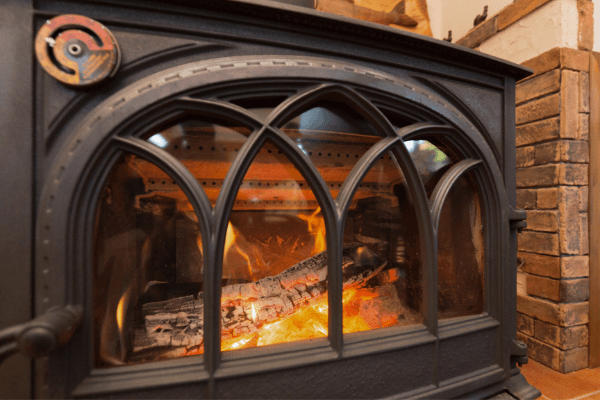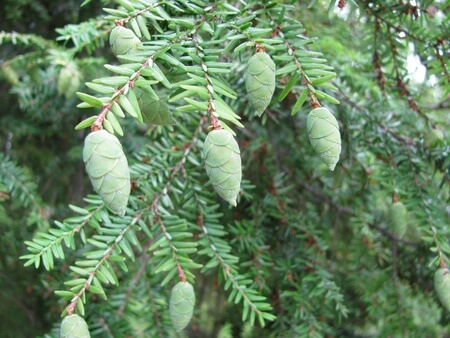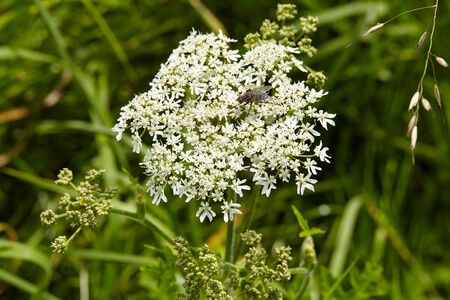- Home
- Firewood Types
- Hemlock Firewood
Hemlock Firewood
This post may contain affiliate links so I earn a commission.
Although it's not the most popular firewood choice, hemlock firewood can be a great wood to burn during the shoulder season months of fall and spring when the outside temperatures are cool but not bitterly cold.
Hemlock is a softwood and just like any other softwood, it's a less desirable firewood when compared to a popular hardwood like oak or maple but that doesn't mean the firewood is useless especially if it's free and easy to access.
In fact, many long time firewood users will agree that any free firewood is worth burning as long as it's dry and easy to obtain.
Hemlock is no exception to this rule.
If you have a neighbor that's looking to give away a couple of hemlock trees, or you have a couple of trees in your yard that need to be removed, don't be afraid to turn those hemlock trees into firewood.

With a decent BTU rating and the option to use hemlock as both a campfire wood or inside your wood stove, adding some of the firewood to your wood rack is not a waste of time.
To learn more, let's look closer at the tree and its heating abilities.
Hemlock Firewood - About The Tree
Hemlock trees are medium to large sized evergreen trees that can grow nearly 100 feet tall and are a common tree found in many forests in the eastern United States.
 Hemlock Tree
Hemlock TreeHemlocks are a member of the pine family and prefer an acidic soil that's moist and allows proper drainage.
Like most pine trees, hemlocks have a shallow root system which often causes them to blow over during strong winds.
These blown down hemlock trees can provide a great source of firewood, especially if they're easy to get too!
Hemlocks are a member of the Tsuga species and are completely unrelated to the poison hemlock plant known as Conium Maculatum.
The poison hemlock is actually a flowering plant that grows about 5-8 feet tall and is not associated with the hemlock tree.
 Poison Hemlock
Poison HemlockThe poison hemlock is best known for being the plant that killed the famous philosopher Socrates.
In the timber industry, hemlock is an important tree used for wood pulp and they also work well when planted for privacy screens although their shallow root systems make them a poor choice for planting near homes and other structors since they can blow down and cause damage.
Burning Hemlock Firewood
Although it's classified as a softwood, hemlock can be a good firewood source as long as the wood is allowed to properly season before use.
The wood actually dries out pretty quick and it's not as sappy and messy as a pine tree making the wood nicer to handle because your hands are not covered in sap after a day of cutting.
Hemlock starts easily and splits easily making it a good choice for kindling.
However, it does not leave behind large coals which could be an issue if you're looking for an overnight burn.
The wood tends to burn up completely leaving behind fine ashes as opposed to large coals that makes restarting a fire in the morning difficult.
Hemlock works great when the outside temperatures are mild and you need a quick fire to take the chill off inside your house, or try mixing the wood in with other popular hardwoods to give you a longer burn time.
Hemlock makes a great firewood for campfires because it burns hot, it smells good and it crackles and pops, giving you the ideal campfire experience.
Hemlock Firewood - Overall
If you have easy access to some hemlock firewood, it's definitely worth burning.
The wood is easy to cut, easy to handle and produces 19.3 million BTUs per cord.

About the Author
Obsessed with firewood, Nick is behind over 350+ of Firewood For Life's articles, as well as countless reviews, guides and YouTube videos to help readers like you reduce heating costs and create the perfect fire.


